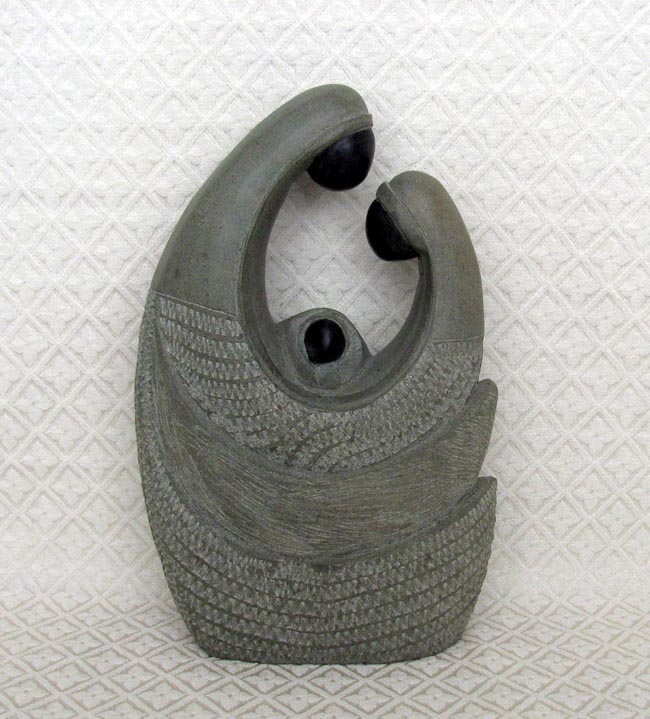OUR COLLECTION — LATIN AMERICA — HAITI 520. ONE-PIECE RIVER STONE HOLY FAMILY
This one-piece Holy Family from Haiti is hand-carved from locally available river stone. In a country with very few economic resources, makers are often self-taught in simple crafts (such as stone carving) in order to support themselves. Makers perfect their skill over time and eventually can create larger, more elaborate stone sculptures such as this. The sculpture was a gift from our friend Carolyn. It measures 11 inches tall.
The natural color of the stone is green-gray. After the artisan etches the clothing design, he rubs a black paste made from a water-soluble aniline dye into the faces of the sculpture to dye them. Next, he applies a coat of black shoe polish and then a topcoat of beeswax to add luster.
The Nativity is marketed by Comite Artisanal Haitien (CAH), an organization that has been committed for over 30 years to working with Haitian artisans to find markets for their products to help them earn a dignified living. CAH represents more than 170 individual Haitian artisans and groups. In Haiti, the poorest country in the western hemisphere, jobs are scarce and the money earned from craftmaking is not just supplemental, it is often the sole source of income for most artisans and their families. In the early 2000s, eighty percent of the people in Haiti lived on less than $2 a day.
The natural color of the stone is green-gray. After the artisan etches the clothing design, he rubs a black paste made from a water-soluble aniline dye into the faces of the sculpture to dye them. Next, he applies a coat of black shoe polish and then a topcoat of beeswax to add luster.
The Nativity is marketed by Comite Artisanal Haitien (CAH), an organization that has been committed for over 30 years to working with Haitian artisans to find markets for their products to help them earn a dignified living. CAH represents more than 170 individual Haitian artisans and groups. In Haiti, the poorest country in the western hemisphere, jobs are scarce and the money earned from craftmaking is not just supplemental, it is often the sole source of income for most artisans and their families. In the early 2000s, eighty percent of the people in Haiti lived on less than $2 a day.
